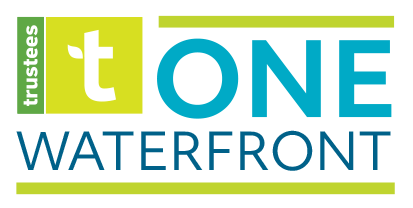Climate + educational programming at the future Piers Park III in East Boston
The resilience advantages of waterfront parks can include stormwater flood mitigation, heat reduction, and even carbon mitigation. These benefits, laid out in the coastal flood resilience design guidelines adopted by the Boston Planning & Development Agency (BPDA) Board of Directors, are also recognized by the Resilient Boston Harbor vision, which incorporates waterfront parks as an option to confront rising sea levels and storm surge.
The current design for Piers Park III in East Boston from landscape architects Michael Van Valkenburgh & Associates features a resilient green shoreline, a priority for the Boston Waterfront Initiative. In addition to being a nature-based way of absorbing and buffering stormwater and sea level rise, the design team also worked to incorporate habitat for learning and public enjoyment, including salt marsh and tidal pools. How to activate some of these features for education and programming was the topic of a public meeting Wednesday night, hosted by the Boston Waterfront Initiative, East Boston's Neighborhood of Affordable Housing (NOAH), and GreenRoots, Inc.
“There really is a unique opportunity with this park to design spaces where we can actually be thinking about what are the climate impacts, how can we illustrate that in some really creative ways in this space?” noted John Walkey, Waterfront Initiative Coordinator for GreenRoots. “Because It really is a blank slate for folks to draw on…This is a great opportunity to think about the design, how people can use it, and to be thinking of the educational programming that can be done, whether about the wildlife, the vegetation, the habitats, or about designing a space where people can sit up and look across the harbor.”
Some of the ideas shared included: Hands-on learning at coastal habitats including saltmarsh and tidal pools, climate- and resilience-focused tours, living shorelines, birdwatching, a weathervane, and multilingual interpretive signage to explore the history of the area and features of the park. The footprint of the future park will vary greatly between high and low tide, with opportunities for programming and education to have a relationship to the daily tidal cycles.
“I would like to see us do some really innovative stuff,” said Latifa Ziyad, Resiliency Planning Coordinator for NOAH. “Some project-based learning could happen…I would love to see critical thinking integrated into programming for both teenagers, college students, and the like, with some of the world-class institutions we have here. Both Greenroots and NOAH have youth climate-related groups, and the New England Aquarium also has a climate-related group. I would love to see us collaborate and work together on some programs for the youth.”
The Wednesday event followed similar virtual public meetings focused on arts & culture programming, and recreational programming. The Piers Park III project is currently in the community design phase, working to gather and incorporate community needs and ideas. An online survey is available for anyone wishing to weigh in on the future design, and additional public events will be announced in the coming weeks.
The design for Piers Park III will continue to evolve as feedback is gathered throughout the year.

